
Labyrinthitis is an inflammatory process that affects the inner ear area - a labyrinth. The disease can occur in an acute form, and also be chronic. The labyrinthite is bacterial in nature, therefore it is a serious danger, and for its treatment, in most cases, antibiotics are needed.
The disease can threaten both adults and children, and in the unfavorable course of events leads to complete or partial deafness, and even sepsis. In this article, we will examine the peculiarities of this disease: we learn its types and symptoms. And also find out what medications and traditional medicine can defeat the inflammation of the labyrinth in adults and children.
Content
- 1 Description and symptoms
- 1.1 Symptoms
- 2 Types
- 2.1 Serous
- 2.2 Festering
- 2.3 Necrotizing
- 3 Pharmacotherapy
- 3.1 Antibiotics
- 3.2 Antihistamines
- 3.3 antiemetic
- 3.4 Sedative
- 3.5 Steroids
- 3.6 Diuretics
- 4 Traditional medicine
- 4.1 Examples of home remedies
- 5 Treatment of children
- 6 Consequences of
Description and symptoms
Inflammation of inner earFortunately, it does not happen very often - among all types of otitis labyrinthite takes only 5%.The fact is that the inner ear is the most difficult region of the auditory organs. Infection can penetrate there, only bypassing the outer and middle ear. But it is possible to get germs from the nasopharynx, as well as infection through the lymphatic or circulatory system. Most often, all the same, the infection sneaks into the labyrinth of the middle ear.
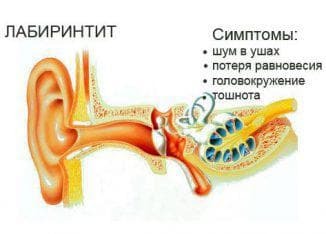
In the picture - labyrinthite
Symptoms of
The patient may complain of dizziness, which is one of the earliest symptoms of the labyrinthitis. At this stage, you need to go to the doctor to avoid complications. Dizziness lasts a few weeks, and then disappears.
If the disease is not treated, and continues to progress, then after a couple of months, this symptom will return in a stronger form.
Noise and ringing in the auditory canals are common in all types of otitis media.
Labyrinthitis is characterized by the fact that with this kind of ear pathologies there are problems with vision. A person with this disease can observe before the eyes of a "fly".Also sometimes it seems that everything flickers before our eyes. The disease entails a violation of coordination of movements.
A person with labyrinthitis is very difficult to work: he can not really concentrate, is distracted, becomes distracted and forgetful. Sometimes the disease causes severe nausea, sometimes reaching vomiting.
Sensible reduction in the level of auditory perception. In especially severe cases, audibility is "turned off" completely.
All these unpleasant, and sometimes painful, symptoms are due to the fact that the liquid( exudate) accumulates in the labyrinth( inner ear).It is this accumulation of exudate that leads to unpleasant symptoms, and the dangerous consequences that labyrinthine is fraught with.
Because of the increase in symptoms during the movement of the head, the patient is forced to lie for the most part, since any attempt to get up turns into that the fluid in the inner ear comes into motion, repeatedly amplifying all unpleasant manifestations of the disease.
On video symptoms and treatment of labyrinthitis in adults:
After the first symptoms begin, the disease enters its uncomplicated stage. This stage usually lasts a week, after which, if the labyrinthine is treated, it passes, and if not treated - passes into a purulent stage( complicated).
To cure an ailment that has reached the purulent stage, it will take several weeks. That's why doctors strongly advise not to launch alarming "bells" associated with the functioning of the auditory organs. The device of the ear, especially its internal part, is so delicate that it is better to stop the disease at its earliest stages.
Types of
We learn which varieties of labyrinthite are known to modern medicine.
This disease is divided into three types according to the degree of pathology:
- serous;
- purulent;
- and necrotic.
Let's talk about these types of the disease a little more.
Serous
This type of labyrinthite is characterized by accumulation of serous fluid in the inner ear. This is the easiest form of the three species considered. Most often, serous labyrinthitis is a complication of purulent otitis media of the middle ear. 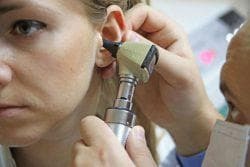
Purulent
In this case, the serous fluid in the labyrinth is replaced by pus. This is already a serious inflammation, requiring immediate antibacterial treatment. Purulent labyrinthitis can kill all nerve cells and sensitive receptors in the inner ear, responsible for "reception" and recognition of sounds from the outside.
Necrotic
At this stage of the disease there is already a death of tissues, individual parts of the labyrinth, and even bone tissue in the inner ear. 
In addition to the level of pathology, the disease also differs by the way it penetrates the inner ear. Depending on this factor, the labyrinthite is named:
- Timpanogenic .Disease-causing microbes penetrate from the middle ear. The most common type of disease.
- Meningogenic. In children, this disease is associated with meningitis, and in adults with tuberculosis, measles, scarlet fever, typhoid. In this case, the infection penetrates through the internal auditory canals, as well as through the lymphatic network. Most often, the meningogenic labyrinthitis affects both ears at once.
- Hematogenic .This is a rare type of labyrinthite. In this case, the infection in the inner ear penetrates through the blood vessels. Sometimes such a disease leads to a flu or parotitis of an epidemic nature.
- Traumatic .This type of disease occurs when the labyrinth is injured mechanically( fracture, bruise).
In addition to all of the above, like almost all other diseases, the labyrinthite can be acute or chronic.
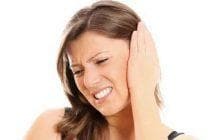 But can you warm your ear with a warmer, and how effective is it.will help to understand the content of this article.
But can you warm your ear with a warmer, and how effective is it.will help to understand the content of this article.
What should be the treatment, when blown ear, will help to understand this information.
Why does the sore throat on the right give in the ear, and what medications will help with this problem, will help to understand this information: http: //prolor.ru/u/ simptomy-u / bol-v-gorle-otdaet-v-uxo.html
How inhalation is done with dry coughover potatoes, and how effective they are, is described in detail in this article.
Medical treatment
What methods and methods of traditional medicine will help get rid of the labyrinthite, we learn.
First of all, to conduct an accurate diagnosis of this disease, and to establish its cause and nature, it is necessary to consult the following medical specialists:
- of an otolaryngologist;

- neurologist;
- of a dermatologist;The
- of a neurosurgeon;
- infectiologist.
In some cases, it may be necessary to consult other medical specialists. Treatment of the disease is carried out in stationary conditions.
Antibiotics
Antibiotic therapy is used in most cases. And this therapy will be, quite a bit, thorough. The most commonly used drugs are:
- Ceftriaxone( and here's how the treatment of sinusitis with antibiotics ceftriaxone is described in this article);
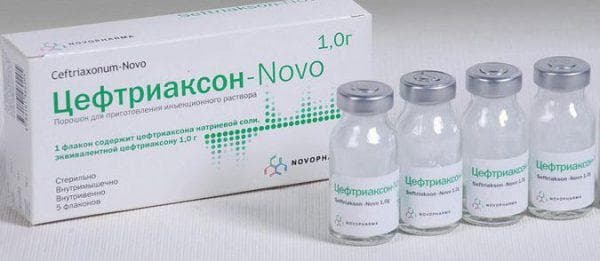
Ceftriaxone
- Azithromycin( whether Azithromycin helps with angina will help to understand this article).
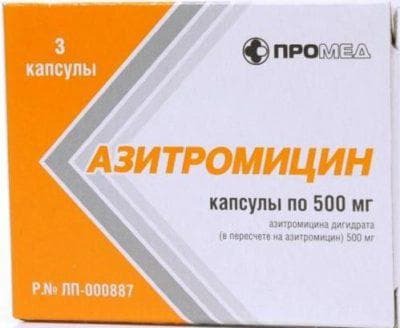
Azithromycin in capsules
Antihistamines
These drugs can remove the swelling of the mucosa in the inner ear. Most commonly used:
- Suprastin;
- Betagystine;

Betazhistin
- Diazolin.
Antiemetic
Since labyrinthite very often leads to nausea and vomiting, sometimes without these drugs can not do. Recommended:
- Fenegran;
- Cried;Scopolamine( patch).
Sedative
To calm the patient and relieve pain, the following medicines are used:
- Lorazepam;

Lorazepam
- Diazepam, etc.
Steroids
These preparations are intended for rapid relief of the inflammatory process. Most often with labyrinthite, derivatives of Prednisolone are used - for example, Medrol.
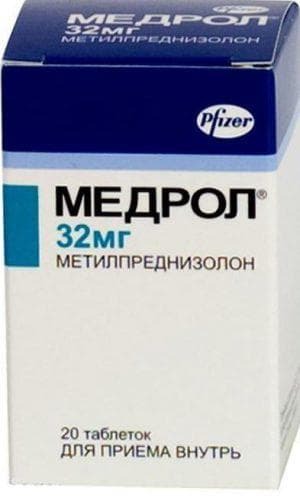
Medrol
Diuretics
These drugs allow you to quickly remove fluid from the inner ear, thereby facilitating the course of the disease. Often used in this case Furasemide .
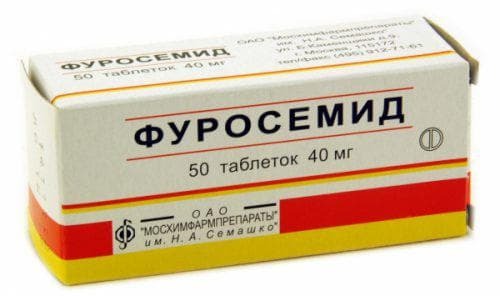
Furasemide
If the disease has reached an already started stage, then surgical intervention is also used. The operation is aimed at eliminating exudate or pus from the inner ear mechanically.
Traditional medicine
Immediately note that the labyrinthine can not be eliminated by any folk methods and home remedies. In the treatment of this disease, the basic therapy must necessarily be medicated. And here are some additional prescriptions for alternative medicine that can be used as additional aids.
Examples of home remedies
The ingestion of garlic and honey will have antimicrobial and immunomodulatory effects, help to strengthen health, and recover faster. 
Decoctions of medicinal herbs such as eucalyptus, marigold, licorice, turn will have antiseptic and anti-inflammatory effects. In addition, they will also strengthen immunity.
If nausea does not make you rest, you can eat such spices as mint, lemon balm, and dried ginger. These spices in dry form can be added to tea, improving its taste, and making it more useful.
Treatment of children
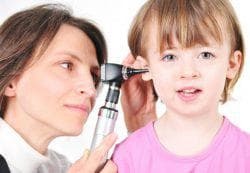
Several points concerning children's therapy with labyrinthite
A child with this disease must be treated under hospital conditions under the constant supervision of medical staff.
Antibiotics are applied according to the age of the child .As a rule, preparations of the combined spectrum, capable of "beating on all fronts," and destroying several types of pathogens at once are prescribed.
Diuretics and a simultaneous diet with a low content of fluids lead to the fact that the exudate leaves the cavity of the inner ear faster.
The child is also prescribed antiseptics and anti-inflammatory drugs. They are necessary to stop the inflammatory process.
Children are given medicines to improve the functions of the vestibular apparatus. These drugs help the child cope with nausea, and improve coordination of movements.
But is it possible to put mustard plasters with dry cough, and how effective they are, is described in great detail in this article.
It will also be interesting to know whether it is possible to take azc with a dry cough.
What is the best treatment for dryness and cortex in the nose, is described in detail in this article.
Consequences of the
If the time is not treated with a labyrinth, or treated, but not properly, the disease can take a chronic form. Most often it happens in adults. If labyrinthitis has become chronic, the vestibular nerve is damaged. Symptoms of the disease during the transition to the chronic phase will occur continuously. However, nothing like it will not hurt, however, the person will lose normal working capacity: he will not be able to be in the crowd, communicate, concentrate, even turning the head will cause difficulties.
A person will not be able to drive a car, nor will he be able to carry a height. The disease affects the ability for a long time to focus on something. Periodically, the patient will feel a ringing in the ears, which also greatly distracts.
Well, if the disease takes a very difficult turn, then a necrotic stage is possible, when the soft tissues die in the inner ear. Sometimes it even leads to a common blood infection. About complete loss of hearing, you can even not say.
Thus, the complications of the labyrinthite, indeed, inspire fear. Therefore, do not hesitate, go to the doctor if you notice any symptoms of the disease in yourself or your child.
We examined the characteristics of such a dangerous and unpleasant disease as the labyrinthite. Now you know what this pathology is and how to get rid of it. We recommend not to allow the development of the disease, and immediately with the first symptoms begin therapy, having previously visited the doctor. In this case, the disease can be stopped without serious consequences and quickly.
